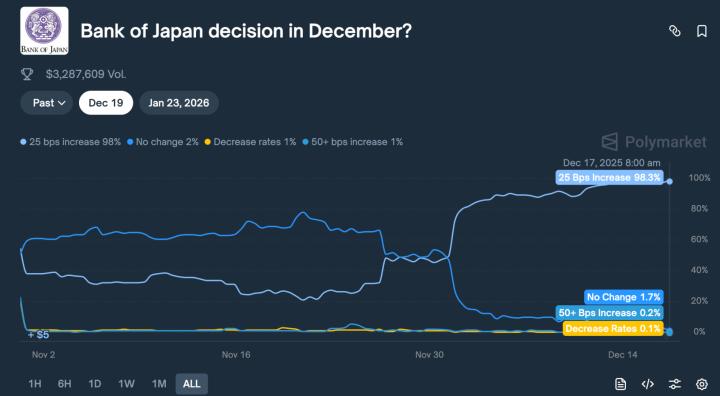Want to buy Bitcoin but don’t know if it’s the right time? Or maybe you’re wondering when to sell Bitcoin and lock in profits before the next dip. Timing the market isn’t easy. However, we have good news. You don’t need a crystal ball; just the right Bitcoin trading strategy.
From spotting the best time to buy Bitcoin to understanding crypto market cycles and using technical analysis, this guide breaks down 12 smart strategies to help you trade like a pro. Here’s how to master buying low and selling high.
KEY TAKEAWAYS➤ Buying and selling Bitcoin should be done strategically and with thought.➤ Buy during market corrections and use technical indicators to time your entry and exits.➤ Never at any point invest more than you can afford to lose. Avoid being in a position where you are forced to exit the market at a loss for liquidity reasons.
In this guide:- When to buy Bitcoin: 6 smart entry strategies
- When to sell Bitcoin: 6 key exit strategies
- Top mistakes to avoid in Bitcoin trading
- So, when should you buy Bitcoin?
- Frequently asked questions
When to buy Bitcoin: 6 smart entry strategies
There’s no magic number when it comes to buying Bitcoin. You’re not just looking for a “good price”; you’re trying to avoid buying the top. To pull that off, you need a Bitcoin trading strategy that makes sense no matter what the market’s doing. Let’s break it down:
Buying the dip
Everyone wants to purchase BTC at the lowest possible price and sell high, but how do you know if Bitcoin is actually in a buyable dip or just heading lower?
A true dip happens when Bitcoin experiences a temporary pullback in an uptrend; a bear trap is when it fakes a recovery before falling further.
 When to sell or buy Bitcoin using trends: TradingView
When to sell or buy Bitcoin using trends: TradingViewUsing technical indicators to time your entry
Bitcoin price indicators can help confirm if it’s a good time to buy, if you know how to read them correctly.
- RSI (Relative Strength Index): Below 30 means BTC is oversold and might be due for a bounce.
- Moving Averages (MA & EMA): If BTC is above the 50-day and 200-day moving averages, it’s in a strong trend.
- MACD crossover: A bullish MACD crossover can signal the start of an uptrend.
 When to sell or buy BTC using multiple indicators: TradingView
When to sell or buy BTC using multiple indicators: TradingViewBuying during market corrections vs. crashes
Not all dips are the same. A market correction (10-20% drop) is a normal part of a bull run, while a crash (30%+ drop) could signal deeper problems.
- Corrections: Healthy pullbacks in a strong market, often caused by profit-taking.
- Crashes: Triggered by panic selling, liquidations, or major macro events.
Pro tip: If Bitcoin breaks below a major support level and keeps falling, it’s not just a correction; it could be a trend reversal.
When it works: Buying during a pullback in a bull market, when Bitcoin volatility is high but the macro trend (broader trend) remains intact.
When it fails: Buying too early in a free-falling market with no signs of recovery. To sum up, never catch a falling knife.
 When to sell Bitcoin seeing a market correction: TradingView
When to sell Bitcoin seeing a market correction: TradingViewBuying based on fundamentals
Focusing on Bitcoin adoption trends and on-chain analytics to time your buys is a tried-and-tested strategy. Here are a few key pointers:
- Institutional accumulation: Big players buying BTC is often a bullish signal.
- Network growth: More active wallets and transactions indicate long-term demand.
- Hash rate trends: A rising hash rate means a stronger, more secure network.
 When to sell or buy Bitcoin using network activity: Santiment
When to sell or buy Bitcoin using network activity: SantimentUsing market sentiment and volume analysis
Sentiment can be a powerful trading tool if you know how to read it.
- Fear & Greed Index: Extreme greed = possible top. Extreme fear = potential opportunity.
- Funding rates: High funding rates mean excessive leverage—usually a sign of an incoming correction.
- Trading volume: A price move backed by strong volume is more reliable than one with low volume.
Pro tip: Never buy Bitcoin just because people are panicking or hyped. Always combine sentiment analysis with technical confirmation.
When it works: Buying when sentiment is overly bearish, but Bitcoin technical analysis signals a recovery.
When it fails: Buying just because the Fear & Greed Index is low, without confirming the trend.
 BTC/USD average: Coinalyze
BTC/USD average: CoinalyzeChoosing the best time of the week to buy BTC
Does it really matter what time or day you buy Bitcoin? Some traders believe so.
- Weekends: Lower liquidity = potential flash crashes and quick dips.
- Mondays & Fridays: Institutional moves can create big price swings.
- Late-night hours: Bitcoin often sees low-volume dips overnight.
When to sell Bitcoin: 6 key exit strategies
Buying Bitcoin is relatively easy. But knowing when to sell Bitcoin is the real challenge. Sell too early, and you leave money on the table. Sell too late, and you risk watching your profits disappear.
Here are a few strategies to help:
Selling at resistance levels
Every Bitcoin run ends eventually. There always comes a price level where selling pressure builds up, and BTC struggles to move any higher. These resistance levels are where smart traders take profits instead of hoping for “one more pump.”
 When to sell Bitcoin if resistance is breached: TradingView
When to sell Bitcoin if resistance is breached: TradingViewUsing technical indicators to exit smartly
Just like they help with entries, Bitcoin technical analysis tools can tell you when to get out before a downtrend starts.
- RSI overbought conditions: When RSI is above 70, Bitcoin may be overvalued.
- MACD bearish crossover: When the MACD line crosses below the signal line, it signals weakening momentum.
- Divergence: If the price is making higher highs, but the RSI is making lower highs, a reversal might be coming.
 When to sell Bitcoin tracking divergence: TradingView
When to sell Bitcoin tracking divergence: TradingViewSelling in bull markets vs. panic selling in dips
Not every dip is a reason to panic, but not every rally lasts forever. The key is taking profits gradually instead of panic selling.
- Bull markets: Sell in phases — instead of dumping everything at once, offload small portions as BTC climbs.
- Bear markets: Avoid panic selling at extreme lows — if you’re already deep in losses, waiting for a recovery might be better.
Setting stop-loss orders to protect profits
Crypto moves at breakneck speeds. If you’re not careful, gains can go poof overnight. That’s why experienced traders use stop-loss orders to automatically sell Bitcoin if prices drop past a certain level.
- Regular stop-loss: A fixed price where your BTC sells automatically to limit losses.
- Trailing stop-loss: Moves up as BTC rises, locking in profits while keeping the upside open.
 when to sell Bitcoin using stop loss: TradingView
when to sell Bitcoin using stop loss: TradingViewFocus on institutional traders and whales
Retail traders tend to dump everything at once. However, whales and institutional traders approach selling Bitcoin a tad differently:
- OTC (Over-the-Counter) trades: Big players sell directly to buyers instead of dumping on exchanges.
- Sell walls: Placing large sell orders slowly instead of all at once.
- Distribution phases: Selling gradually over time to avoid shocking the market.
Be aware of the tax considerations while selling
Selling Bitcoin isn’t just about market timing; it’s also about tax efficiency.
- Short-term vs. long-term gains: Holding Bitcoin for over a year usually means lower taxes.
- Tax-loss harvesting: Selling at a loss to offset other taxable gains.
- Tax-friendly jurisdictions: Some countries have zero crypto tax. This is worth knowing more about if you trade large volumes.
Pro tip: If you’re unsure about taxes, check with a crypto-savvy tax professional before selling, not after.
When it works: Selling in a way that minimizes tax liabilities while still taking profits.
When it fails: Selling impulsively without considering capital gains taxes and getting hit with unexpected tax bills.
Bitcoin isn’t about “diamond hands” vs. “paper hands” — it’s about smart hands. Selling at the right time means balancing technical analysis, market cycles, and risk management in crypto to maximize gains without emotional decision-making.
Top mistakes to avoid in Bitcoin trading
Now that we’ve walked through when to buy and when to sell Bitcoin, one thing is obvious. Most people don’t mess up because of bad strategies. They mess up because they ignore them.
Here are five common mistakes that trip up even the smartest traders. Avoid these, and you’re already ahead of the game:
- Buying during extreme FOMO
- Ignoring technical and fundamental signals
- Overtrading with high-leverage
- Selling too early or too late without a plan
- Changing your strategy mid-trade
So, when should you buy Bitcoin?
You don’t need to be perfect; you just need to be strategic. The best traders know when to buy Bitcoin, when to sell Bitcoin, and, most importantly, when to sit back and do nothing (like right now)!
Whether you’re riding the wave of a Bitcoin halving, tracking market sentiment, or using tools like RSI and MACD for entries and exits, the secret isn’t timing the top or bottom — it’s avoiding those little mistakes in between. So take profits without guilt. Be patient when the market is cold, and never stop educating yourself.
Disclaimer: This article is for informational purposes only and should not be considered investment advice. Always do your own research (DYOR).
Frequently asked questions
How can you avoid emotional trading during volatile Bitcoin moves?
The best way is to set a clear plan before you enter a trade. Define your buy/sell targets and stop-loss levels ahead of time. That way, when volatility kicks in, you’re reacting based on strategy, not emotions.
What tools can you use to automate your Bitcoin trading strategy?
You can use platforms like 3Commas, Coinrule, or Bitsgap to automate entries, exits, and risk management in crypto. They help you stick to your plan without constantly staring at charts or panic-trading during big price moves.
Can you buy Bitcoin in small amounts regularly instead of timing the market?
Yes, that strategy is called Dollar-Cost Averaging (DCA). You simply buy a fixed amount of Bitcoin at regular intervals. It’s one of the easiest ways to remove emotion and reduce risk from your buying decisions.
Where can you track what whales and institutions are doing with Bitcoin?
Platforms like Arkham, Glassnode, and Whale Alert let you monitor large wallet movements, whale buys, and on-chain activity. If you want to trade smart, follow what the big players are doing.
How do spot and futures trading in crypto differ?
Spot trading means you actually own the Bitcoin you buy; simple and safe. Futures trading lets you bet on price movements without owning BTC, but it comes with higher risk and the potential for liquidation if you’re wrong. If you’re new, start with spot.








